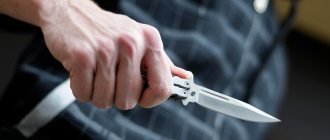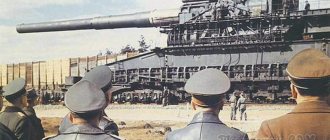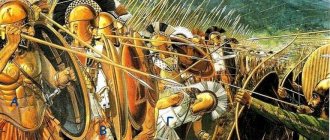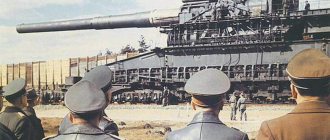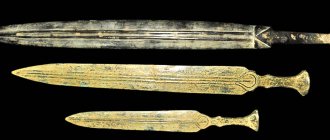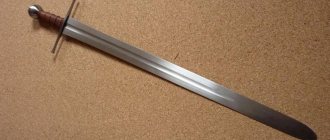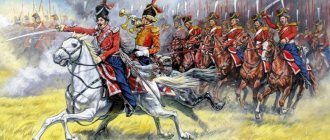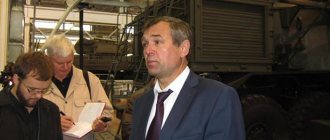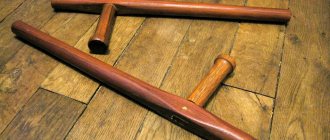Thousands of years ago, primitive people, in order to protect themselves from wild animals and hostile people, began to use various objects: driftwood and sticks, sharp stones, etc. It was from those distant times that the history of weapons began. With the development of civilization, new types of it appeared, and each historical era corresponds to more advanced ones than at the previous stage. In a word, weapons, like everything else on our planet, have followed their own special evolutionary path throughout the history of existence - from the simplest stone ax to nuclear warheads.
Types of weapons
There are various classifications that divide weapons into different types. According to one of them, it can be cold and gunshot. The former, in turn, also comes in several types: chopping, piercing, percussion, etc. It is powered by the muscular strength of a person, but firearms operate by the energy of a gunpowder charge. Consequently, it was invented precisely when people learned to make gunpowder from saltpeter, sulfur and coal. And the Chinese were the first to distinguish themselves in this (back in the 9th century AD). The history of weapons does not have exact data on the date of creation of this explosive mixture, but the year is known when the “recipe” for gunpowder was first described in a manuscript - 1042. From China, this information leaked to the Middle East, and from there to Europe.
Firearms also have their own varieties. It comes in small arms, artillery and grenade launcher types.
According to another classification, both cold weapons and firearms are melee weapons. In addition to them, there are weapons related to means of mass destruction: nuclear, atomic, bacterial, chemical, etc.
How it all began
Gunpowder, as you know, was invented in China. There are versions according to which it was described back in the 5th century. However, gunpowder received practical use only several centuries later.
Moreover, its creators did not even think that someday their invention would turn into a destructive weapon. Gunpowder was used on all kinds of holidays for fireworks and other entertainment.
The first Chinese powder rockets. (wikipedia.org)
And this continued until they learned about the invention in Europe. There they quickly found a completely different use for it. Firearms were first used in the Hundred Years' War (1337−1453). However, then he failed to supplant swords, bows, spears, halberds and axes. Still, those guns that the British had in service were bulky, heavy, inconvenient to use and, most importantly, ineffective.
The so-called bombards could fire a couple of shots per hour, but at the same time, they did not inflict enough damage on the enemy to influence the course of the battle. The British owed their successes in the Hundred Years' War to archers, and the French to Joan of Arc, but not to firearms. Everything changed already in the 15th-16th centuries, when European craftsmen began to create the first pistols and shotguns. So in the twenties of the sixteenth century, arquebuses became widely used. These guns pierced through the knight's armor from 35 meters, including the knight. In 1525, at the Battle of Pavia, the Spaniards, thanks to arquebuses, defeated the army of the French king Francis I. Francis was captured, and the battle itself, in fact, showed a thing that was obvious to modern times: knightly armies are ineffective and helpless in the face of firearms. In the same battle of Pavia, the musket received its baptism of fire, which then for many years became the main type of firearm for all the armies of Europe.
Musketeer with a musket. (wikipedia.org)
By the end of the 16th century, the nobles almost completely abandoned armor, and each of them had a pair of pistols on their belts.
Primitive weapons
We can judge what the means of protection were at the dawn of human civilization from the finds that archaeologists managed to obtain in the habitats of ancient people. All these finds can be seen in various historical and local history museums.
The most ancient types of primitive weapons were stone or bone arrowheads and spears, which were found on the territory of modern Germany. These exhibits are about three hundred thousand years old. The figure is, of course, impressive. For what purposes they were used, for hunting wild animals or for war with other tribes, we can only guess. Although rock paintings to some extent help us restore reality. But about the periods when writing was invented by humanity, literature, historiography, and painting began to develop, we have enough information about new achievements of people, including weapons. From this time on, we can trace the complete path of transformation of these defensive means. The history of weapons includes several eras, and the initial one is primitive.
At first, the main types of weapons were spears, bows and arrows, knives, axes, first bone and stone, and later metal (bronze, copper and iron).
Firearms era
The official date of the emergence of firearms, at least among European peoples, is considered to be the 14th century, when the development of technology made it possible to use gunpowder.
In Germany, in the city of Freiburg, there is a monument to a man in a monastic robe, whose name was Berthold Schwartz. Franciscan monk Berthold Schwartz, accused of practicing black magic and witchcraft, was sent to prison. Continuing his experiments here, he once mixed sulfur, saltpeter and charcoal in a ratio of 10:75:15. The result was a composition of terrible destructive power: gunpowder! This happened in 1330. Soon this recipe became known everywhere, and it was from the beginning of the 14th century that gunpowder became widespread in Europe. Over the battlefields, where previously only the clash of swords, the whistle of a flying arrow and the sound of trumpets had been heard, the heavy hooting of the first cannons was heard.
Berthold Schwartz
Ancient mentions of gunpowder. Hannibal, Alexander the Great, sacred texts of India
Subsequently, gunpowder was used without significant changes until the second half of the 19th century. If you delve carefully into history, you can find amazing facts. It turns out that long before the discovery of Berthold Schwartz, gunpowder suddenly appears in one place, then in another, then just as suddenly suddenly disappears for as long as 500 years. It is inexplicable why such an important weapon of war does not become fully widespread, why not one of the conquering commanders was ever able to use this terrible means, which would bring any enemy to his knees. One might think that there were some people who sought to prevent the secret of this disastrous weapon from becoming the property of everyone. Information about gunpowder was kept in the strictest confidence. By whom? In any case, not by warriors or politicians, who would not fail to use it. And isn't it strange that every time a secret seems to have gotten out of control, cases of gunpowder being used become known, but then it disappears again without a trace?
In 1257, the Arabs used gunpowder during the siege of one of the cities of Spain. Another case of its use (also by the Arabs) dates back only to 690. In 668, gunpowder was known to the Egyptians, and even earlier, in 80 AD, its recipe from India came to China.
When Hannibal, commanding the Carthaginian army, passed through the Alps and descended into Italy, Roman legions blocked his path near Lake Trasimene. Here the fate of the entire campaign was decided. If Rome wins this time, it will finally become the ruler of the entire coast of the Dismal Sea, as the Mediterranean Sea was then called. The fate of the peoples will be controlled by fed-up Roman senators, greedy slave owners and cruel warriors. As for Carthage itself, it will be destroyed.
In history books you can read that Hannibal won, but there is hardly any description of how this happened. For some time the two armies stood opposite each other, then Hannibal retreated somewhat. Roman legionaries marched to the site from which the Carthaginians had retreated. Suddenly, under the feet of the Romans, as the chronicle of those years reports, an “earthquake” began. But it was a very strange earthquake, from which only the Romans suffered! Everything was covered in smoke. When the smoke cleared, it turned out that most of the legionnaires were lying on the ground, buried under a layer of stones and rocks, which, having flown into the air, fell on their heads. As you know, not a single earthquake could have caused stones and fragments of rocks to fly up and then fall on the heads of the Romans. It is also unlikely that an earthquake would be accompanied by smoke coming from nowhere. There can only be one explanation for what happened. Hannibal deliberately lured the Romans to a mined field and then detonated the bomb.
Among the oldest descriptions of the aggressive campaigns of Alexander the Great one can find extremely interesting facts about the use of gunpowder. Having set out to conquer India in the 4th century BC, the Macedonians encountered insurmountable obstacles. In a waterless area under the rays of the scorching sun, the soldiers of the great commander were exhausted. Lack of food and, as a consequence, hunger, disease and constant attacks by Hindus literally decimated the ranks of the conquerors. And to all this, as an attack, when defending fortresses, the Indians used devices that spewed “thunder and lightning,” against which even the strongest and bravest warriors were powerless. “The gods helped the inhabitants of this city! - they recalled later. “Lightning and thunder rained down on us from its walls.” This information is one of the earliest mentions of an explosive substance - gunpowder.
There is a mention of gunpowder in the Bible, but also not direct. It talks, for example, about the “Trumpet of Jericho.” This trumpet had such a loud sound that fortress walls fell from it. It can be assumed (and a number of researchers share this opinion) that we are talking about a siege weapon such as a cannon or mortar.
In India, gunpowder was known already five thousand years BC. Moreover, its recipe was known from even more ancient sacred texts.
Such gunpowder was called black or smoky because when it burned, a lot of black smoke was released.
Initially, only the explosive and incendiary properties of gunpowder were used. Quite a bit of time passed, and a person discovered its throwing properties.
Previously, gunpowder probably penetrated into Europe in two ways.
The first passed from China through Manchuria and Mongolia. Along this road it was brought to Europe by the conquering Mongols under the leadership of Batu. One of the written sources of the 13th century talks about the use of “fiery means of combat” by Mongol troops under the command of Batu’s brother, Khan Baydar, during the siege of Legnica Castle in 1241.
The second passed along the trade silk road, running through the territories of the countries of Indochina, Central Asia and the Middle East. Then, until the 14th century, gunpowder again, for some unknown reason, disappeared from Europe. The use of gunpowder energy to launch projectiles marked the beginning of a new era in military affairs: artillery appeared first, and soon after it, in the same century, a separate branch of artillery arose - handguns.
Bombard
Among the first examples of artillery firearms were bombards - guns that fired large-diameter stone cannonballs. Their size can be judged by the example of the “Kriemgild”, made around 1388 by the master Grunwald in the German city of Nuremberg. The mass of the gun was 3 thousand kilograms, and the mass of each core was more than 300 kilograms. To transport the Krimgild, a team of 12 horses was required.
Bombard "Krimgilda"
At the end of the 14th century, differentiation of firearms occurred. Artillery pieces and handguns are separated into separate groups.
In Rus', firearms also appeared in the 14th century. The exact date of its appearance has not been established. According to the Golitsyn Chronicle, “Armatians” appeared in Rus' in 1389 “and from that hour they learned to shoot from them.” But in the Novgorod Chronicle, and then in the Sophia Vremennik, mention is made not just of the appearance, but of the combat use of firearms - cannons and so-called mattresses during the defense of Moscow from the Tatars in 1382. In any case, the production of gunpowder and a fairly high level of ironworking and blacksmithing - necessary prerequisites for the emergence of firearms - existed in Rus' even before the 14th century.
Hand grip
One of the first examples of hand-held firearms was the hand grip. It appeared at the end of the 14th century and was widespread not only in Western and Eastern Europe, but also in Rus'. The first examples of hand grips were extremely imperfect and consisted of short iron, sometimes bronze tubes, riveted from separate strips or forged from a whole piece. One end of the tube was closed tightly and sometimes ended with a long metal rod or turned into a shaft at the back, which served as a modern stock. Tube-trunks without these rods were attached to stocks, which were roughly processed wooden blocks. During shooting, foot soldiers pushed him into the ground, and cavalrymen in the chest, shoulder, or took him under the arm. Loading and firing were carried out in the most primitive way. A charge of gunpowder was poured into the bore, and then a projectile was inserted into it - an iron or lead spherical bullet. The gunpowder charge was ignited manually by bringing a smoldering wick or a hot rod to a small hole in the barrel wall (seed hole).
Initially, the handbrake was operated by two arrows. The first shooter pointed the weapon at the enemy, and the second set fire to the gunpowder. The hand grip had an impressive size - a caliber of up to 25 mm and a weight of up to 8 kg. The target firing range did not exceed 150 meters. This weapon was used by the Russian army until the beginning of the 16th century. The ruchnitsa was not fundamentally different from artillery guns and, in essence, was the same guns, but only reduced so much that they could be fired from the hands. Hence the name “handle” (and later “gun”), adopted in Rus' and among a number of Slavic peoples. In the West, these early primitive handguns were called hand cannons, hand bombards, or petropellas.
Samples of European handguns of the 14th-15th centuries. A - iron hand bombard with a wooden stock from the late 14th century; B - all-iron hand bombard-hack of the early 15th century; B - petronella of the second half of the 15th century. When firing, the ring rested against the rider’s chest and the under-barrel protrusion rested against a fork-shaped stand attached to the pommel of the saddle; G - bronze hand bombard of the late 15th century
Already in the first quarter of the 15th century, the first improvements appeared in the design of hand-held firearms - the barrels became longer, the butts were curved, and the seed holes were located not on the aiming line, that is, not on the top, but on the side. Shelves were attached near the seed holes, onto which the seed was poured, and sighting devices appeared on the weapon. Such weapons in Western Europe were called culverins.
Culverins 15 in
At first, hand-held firearms of the fortress type predominated, that is, used for the defense of fortresses and rested against some strong support during shooting. In an effort to increase the range of an effective shot, gunsmiths began to lengthen the barrel. The weapon, already heavy, gained weight, and recoil increased significantly. To eliminate its noticeable effect, a massive hook (hook) was attached to the end of the barrel, which was hooked onto a stop - a wall or beam - and a shot was fired.
Gakovica
gakovitsa appeared - heavy hand-held firearms used in the 14th - 18th centuries. They fired tin bullets with a diameter of 14 to 25 mm. In Rus', such weapons were called zatinny, that is, serf squeaks. This weapon was unsuitable for field combat. The firing efficiency of the first types of handguns was extremely low, and handling them was very difficult and painstaking. The process of loading weapons was extremely time-consuming and usually took several minutes. The greatest inconvenience was the handling of gunpowder, which at that time was a fine, dusty powder (grainy gunpowder appeared only in 1525). Handling the first types of small arms was also unsafe, as they were prone to frequent explosions. A great inconvenience was the method of igniting the charge using a smoldering wick or a hot rod brought to the seed by hand. It distracted the shooter’s attention from aiming, contributing to a decrease in the already low accuracy.
Serf guns 15-16 centuries. Below is a Russian hakovnitsa from the early 16th century.
For a long time, handguns remained very imperfect - their improvement was hampered by the general low level of medieval technology.
Arquebus
arquebuses (Russian name for arquebuses appeared , direct predecessors of small arms of our days. They had curved stocks to rest on the shoulder and allowed shooting from the hand. True, the accuracy of the shot was still low, and the penetration power of the bullets was often insufficient to defeat the iron-clad horseman. The flight range of arquebus bullets did not exceed 250 meters. It should be noted that the arquebus was called not only a firearm, but also a throwing weapon, which was essentially a crossbow, but equipped with a semblance of a barrel with longitudinal cuts for a bow string, thanks to which it could shoot both arrows and lead bullets.
Arquebus early 16th century. with spring wick lock. Nearby are depicted the simplest serpentines of the second half of the 15th century, set in motion by the direct action of the shooter’s muscular force on them
The first primitive mechanisms appear on weapons, facilitating the process of firing a shot. Such a mechanism was a matchlock. At first it was an iron rod bent in the shape of the Latin letter S, and therefore resembled a snake; it received the name serpentine from the Latin serpeus - snake. A smoldering wick was clamped at the upper forked end, and the lower end was pressed by the shooter during descent. Rotating on an axis, the upper end of the trigger with a smoldering wick was pressed against the seed hole and ignited the gunpowder. Then the castle underwent a number of changes and improvements. At the end of the 15th century, a spring wick lock appeared, in which the trigger with the wick is brought closer to the primer using a pre-compressed spring. The cocked hammer was released when the button was pressed. Unlike the first version of the trigger, the spring matchlock almost instantly and with force hit the seed shelf, that is, aiming and firing were almost simultaneous. The trigger was returned to its original position by hand. Still, arquebuses had many disadvantages: the loading process was extremely lengthy and tedious for the arquebusier. The clumsy heavy weapon (up to 15 kg) exhausted the soldier so much that, according to contemporaries, an arquebusier who fired more than ten shots per hour was no longer able to hit the target.
Schemes of operation of spring wick locks: A - lock of the late 15th century. with a spring acting on the serpentine; B - castle 16th century. (a view from the inside is shown) with a lever mechanism in which the serpentine approaches the seed under the influence of the shooter’s muscular force, and returns it to its original position under the influence of a spring
In an effort to increase shooting, gunsmiths invented a rifled barrel in the same 15th century. Historians attribute this invention to the Viennese gunsmith Gaspar Zollner, who in 1498 made rifling in the bore parallel to its axis. After some time, August Kotter went further and replaced the straight thread with a screw thread. The accuracy and firing range of rifled arquebuses was much greater than smoothbore ones. Although, due to the general low level of technological development of those years, rifled weapons for military purposes received general recognition later, nevertheless, their quantitative growth in the armies of European states continued steadily. Already in 1455, the Swiss mercenary army had 100 arquebusiers for every 1000 infantry.
The first widespread use of arquebuses was noted in the Hussite Wars of 1419-1434, when the Czech Republic fought for its national independence. In these wars, the Taborite army, which united peasants and the urban lower classes in its ranks, under the leadership of Jan Zizka repelled five crusades of German knights. The main tactical unit of the Taborites was a cart with a crew of 18-20 people, two of whom were riflemen armed with arquebuses and hand grips. Thus, the saturation of the Taborite army with small firearms was impressive. Thus, in the Battle of Domažlica alone, the Taborites had 6,000 riflemen, which amounted to almost 10% of the total number of their troops.
At the end of the 15th and beginning of the 16th centuries, the role of firearms increased so much that these weapons began to significantly influence the course and outcome of battles. An example is the Battle of Agnadello in 1509. In an effort to protect its independence from the encroachments of the French crown, the Venetian Republic created a 25,000-strong army. A significant part of it had wick arquebuses. In May 1509, it took up a position on the rugged terrain of the left bank of the Adda River, between the cities of Trevilio and Rivalto, and awaited the enemy's approach. The larger army of Louis XII, trying to maneuver the Venetians into an open field, began to bypass their left flank. On the approaches to the village of Agnadello, the armies came into combat contact, in which the French vanguard encountered a barrage of lead bullets. The Venetian riflemen were formed in several ranks with open rows. Having fired, the arquebusier retreated at intervals to load his weapon, and his place was taken by the shooter of the second rank, followed by the shooter of the third, etc. In this way, relative continuity of fire was maintained. Therefore, repeated attempts by French infantry and men-at-arms to capture Venetian positions ended in complete fiasco. Hundreds and thousands of them fell under hails of arquebus bullets. Inspired by the picture unfolding before them, the Venetians made a fatal tactical mistake - they entered the plain, as a result of which they were defeated by superior enemy forces, who also received fresh reinforcements - several thousand soldiers.
Matchlock Musket
In 1521, the arquebus was replaced by the matchlock musket, whose homeland was Spain. The new gun had a larger caliber and length compared to the arquebus and, moreover, surpassed it in ballistic properties. The musket had a caliber of up to 23 mm, a length of 180 cm, its weight ranged from 8.2 kg to 10.24 kg, the firing range was 200-250 m. Shooting was carried out with round fifty-gram lead bullets, the impact of which even the heaviest and most durable could not withstand armor Therefore, this quality of the musket was decisive in the fight against heavy cavalry. The impressive weight of the weapon and the sensitive recoil when fired forced it to be used with a special fork-shaped bipod with a height of 120-135 cm, called a forket, and to put a soft leather pillow on the shoulder.
European muskets 16-17 centuries. with matchlocks, also used in Russia. Below is a fork that served as a support for the weapon during shooting.
Russian matchlock musket 17th century
Persian matchlock gun 16-17 centuries
Indian matchlock gun 16-17 centuries
Not every soldier could become a musketeer, so the strongest and strongest people were selected for this purpose. And the musketeer’s equipment was quite heavy. On his belt hung a leather bag, which contained up to three dozen lead bullets, which he cast with his own hands. A wide bandelier made of tanned leather was thrown over the left shoulder, where 12 measures were located on the cords, 11 with pre-measured charges of gunpowder and one with powder pulp to transfer fire to the powder charge on the barrel. Wicks up to one meter long hung here. The supply of gunpowder carried by a musketeer was placed in a large wooden powder flask, upholstered in thick leather.
Musketeer
Loading the musket was slow and was a real pain for the shooter. Even in the 17th century, during the Thirty Years' War, an Austrian musketeer had to listen to 163 commands and perform 99 operations to load and prepare the musket for firing before firing. Only after all this was a shot heard. At the time of loading, the musketeer was defenseless and was also armed with a sword for self-defense. It often happened that his life depended entirely on how he wielded this weapon. Being excellent fencers, musketeers were often more skilled with bladed weapons than with firearms. To protect the musketeers, pikemen were assigned, armed with pikes to repel enemy attacks. To maintain continuous rifle fire for musketeers, a special formation was invented - “caracole” (snail). It was a formation of ten ranks. After firing a volley at the enemy, the first rank was divided into two parts and quickly went to the rear to load muskets. The second, third and subsequent ranks advanced in its place. In addition, the musketeers were trained to make countermarches not only back, but even forward and to the flanks.
One of the first to appreciate the enormous capabilities of muskets was the Swedish army. In 1630-1631, in an infantry regiment of 1,440 personnel, 648 were armed with muskets. At the same time, regiments consisting entirely of musketeers appeared in the army of Gustavus Adolphus. The great military reformer, as some Western historians call him, Gustavus Adolphus developed and applied new linear tactics, which more than once brought success to the Swedes in the battles of the Thirty Years' War. Linear tactics allowed for the massive use of muskets. The weapon, located in 2-3 lines and 3-6 ranks deep, could simultaneously fire a salvo from several thousand barrels at once. The Swedish victories at Breitenfeld (1631) and Lützen (1632) convincingly proved the viability of the new tactics, where the increased power of the musket was more fully used.
Medieval weapons
After people learned to process metals, they invented swords and pikes, as well as arrows with sharp metal tips. For protection, shields and armor (helmets, chain mail, etc.) were invented. By the way, even in ancient times, gunsmiths began to make rams and catapults from wood and metal for the siege of fortresses. With each new round in the development of mankind, weapons also improved. It became stronger, sharper, etc.
The medieval history of the creation of weapons is of particular interest, since it was during this period that firearms were invented, which completely changed the approach to combat. The first representatives of this species were arquebuses and arquebuses, then muskets appeared. Later, gunsmiths decided to increase the size of the latter, and then the first artillery pieces appeared on the military field. Further, the history of firearms begins to note more and more new discoveries in this area: shotguns, pistols, etc.
Meanwhile in Russia
In Rus', they became acquainted with firearms in approximately the same years as in Europe. The first mention of the use of firearms dates back to 1399. But it became widespread only at the end of the 15th century. Early examples of firearms in Rus' were called arquebuses. The new product was treated with some caution, and not everyone was ready to adopt it. However, already in the 16th century, special units appeared in the country - archers. Guns were actively purchased for them in Europe. They established their production in Russia much later. The first attempts date back to 1595, when, by decree of Tsar Fyodor Ioannovich, 30 families of blacksmiths and self-finishers were resettled in Tula in order to begin manufacturing firearms. In 1632, the production of cannons and cannonballs was started here. It is not surprising that Peter I, who understood the need to create his own weapons school, chose Tula as the place to found a factory for the production of firearms.
Jacob Bruce. (wikipedia.org)
Thus, in 1712, an enterprise was founded, which we now know as the Tula Arms Factory. Now this plant is more than three hundred years old, and it is part of the Rostec State Corporation system.
New time
During this period, edged weapons gradually began to be replaced by firearms, which were constantly modified. Its speed, destructive power and range of projectiles increased. With the advent of the 20th century, the history of weapons did not keep pace with inventions in this area. During the First World War, tanks began to appear in the theater of operations, and airplanes began to appear in the sky. In the mid-20th century, the year the USSR was involved in World War II, a new generation of automatic weapons was created - the Kalashnikov assault rifle, as well as various types of grenade launchers and types of rocket artillery, for example the Soviet Katyusha, and underwater military equipment.
Small arms of the Wehrmacht of World War II
The main strategy of the German army is offensive or blitzkrieg (blitzkrieg - lightning war). The decisive role in it was assigned to large tank formations, carrying out deep breakthroughs of the enemy’s defenses in cooperation with artillery and aviation.
Tank units bypassed powerful fortified areas, destroying control centers and rear communications, without which the enemy quickly lost their combat effectiveness. The defeat was completed by motorized units of the ground forces.
Small arms of the Wehrmacht infantry division
The staff of the German infantry division of the 1940 model assumed the presence of 12,609 rifles and carbines, 312 submachine guns (machine guns), light and heavy machine guns - 425 and 110 pieces, respectively, 90 anti-tank rifles and 3,600 pistols.
The Wehrmacht's small arms generally met the high wartime requirements. It was reliable, trouble-free, simple, easy to manufacture and maintain, which contributed to its serial production.
Rifles, carbines, machine guns
Mauser 98K
The Mauser 98K is an improved version of the Mauser 98 rifle, developed at the end of the 19th century by the brothers Paul and Wilhelm Mauser, founders of the world famous arms company. Equipping the German army with it began in 1935.
Mauser 98K
The weapon was loaded with a clip of five 7.92 mm cartridges. A trained soldier could shoot 15 times within a minute at a range of up to 1.5 km. The Mauser 98K was very compact. Its main characteristics: weight, length, barrel length - 4.1 kg x 1250 x 740 mm. The indisputable advantages of the rifle are evidenced by numerous conflicts involving it, longevity and a truly sky-high “circulation” - more than 15 million units.
At the shooting range. Mauser 98K rifle
G-41 rifle
The self-loading ten-shot rifle G-41 became the German response to the massive equipping of the Red Army with rifles - SVT-38, 40 and ABC-36. Its sighting range reached 1200 meters. Only single shooting was allowed. Its significant disadvantages - significant weight, low reliability and increased vulnerability to contamination - were subsequently eliminated. The combat “circulation” amounted to several hundred thousand rifle samples.
G-41 rifle
MP-40 "Schmeisser" assault rifle
Perhaps the most famous Wehrmacht small arms of the Second World War was the famous MP-40 submachine gun, a modification of its predecessor, the MP-36, created by Heinrich Vollmer. However, as fate would have it, he is better known under the name “Schmeisser”, obtained thanks to the stamp on the store - “PATENT SCHMEISSER”. The stigma simply meant that, in addition to G. Vollmer, Hugo Schmeisser also participated in the creation of the MP-40, but only as the creator of the store.
MP-40 "Schmeisser" assault rifle
Initially, the MP-40 was intended to arm the command staff of infantry units, but later it was transferred to the disposal of tank crews, armored vehicle drivers, paratroopers and special forces soldiers.
A German soldier fires from an MP-40
However, the MP-40 was absolutely unsuitable for infantry units, since it was exclusively a melee weapon. In a fierce battle in open terrain, having a weapon with a firing range of 70 to 150 meters meant for a German soldier to be practically unarmed in front of his enemy, armed with Mosin and Tokarev rifles with a firing range of 400 to 800 meters.
Weapons of mass destruction
None of the above types of weapons can be compared with this one in terms of their danger. This, as already mentioned, includes chemical, biological or bacteriological, atomic and nuclear. The last two are the most dangerous. For the first time, humanity experienced nuclear force in August and November 1945, during the atomic bombings of the Japanese cities of Hiroshima and Nagasaki by the US Air Force. The history of nuclear weapons, or rather, their combat use, begins precisely from this dark date. Thank God that humanity never had to experience such a shock again.

